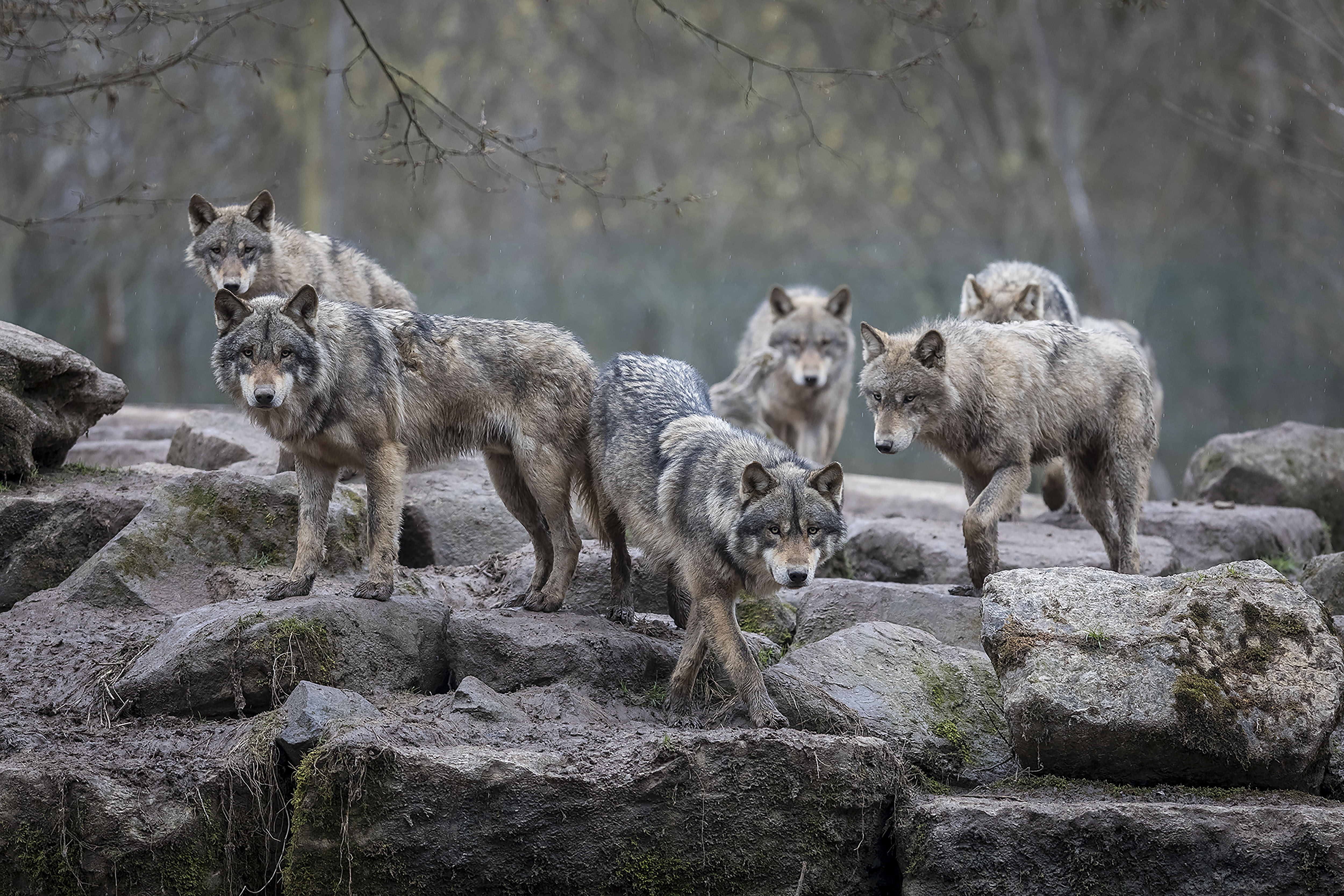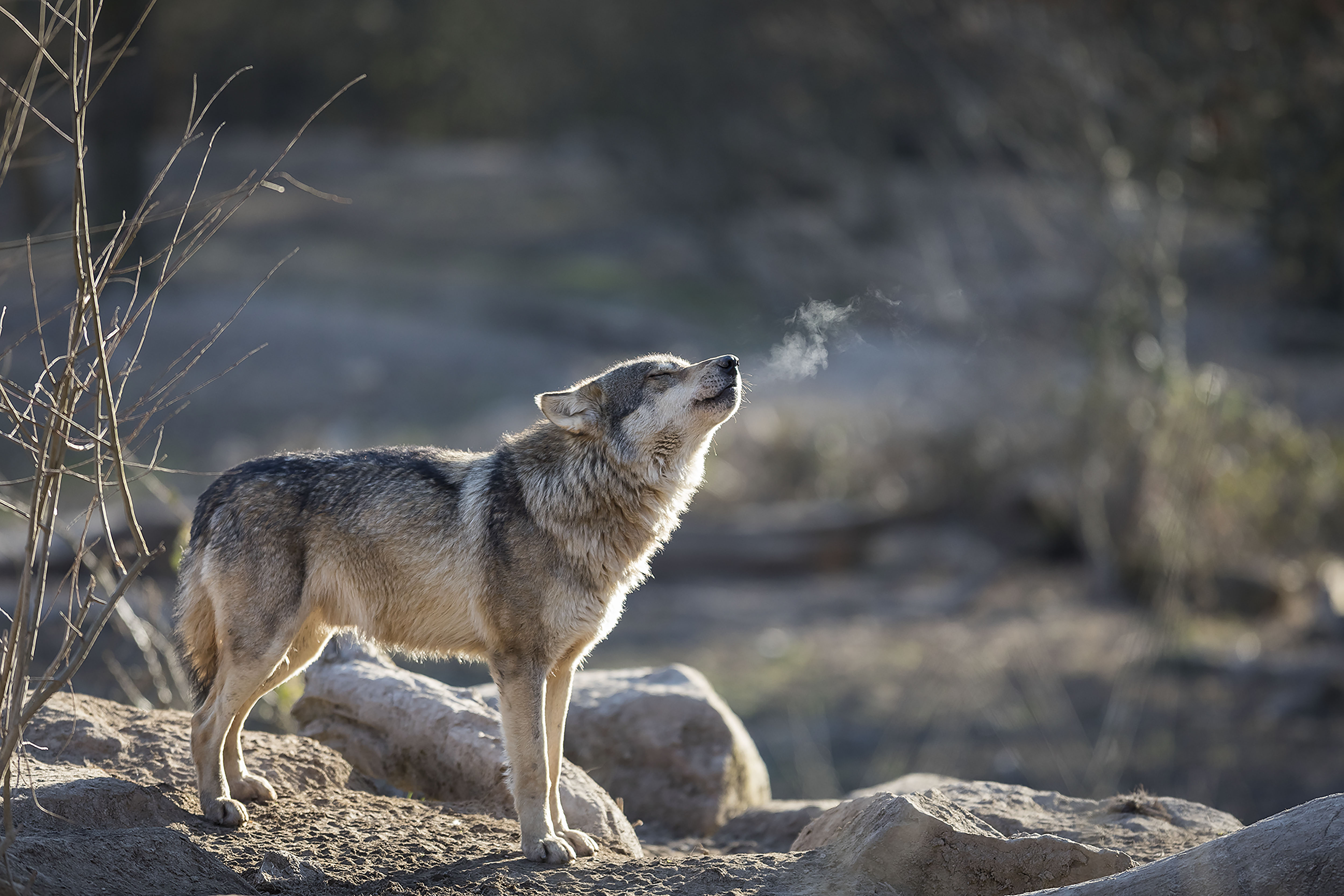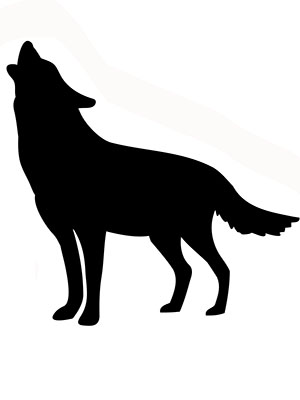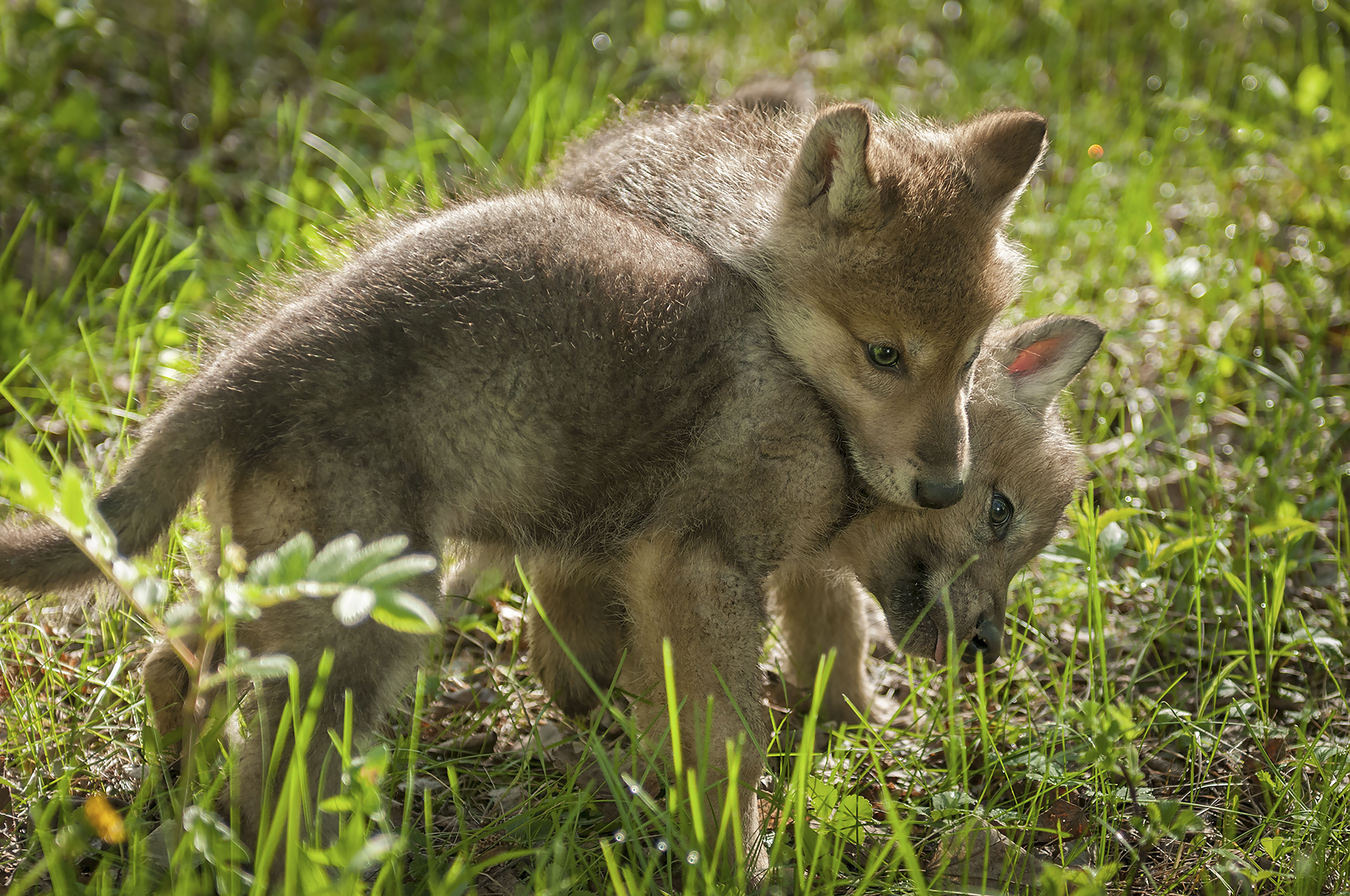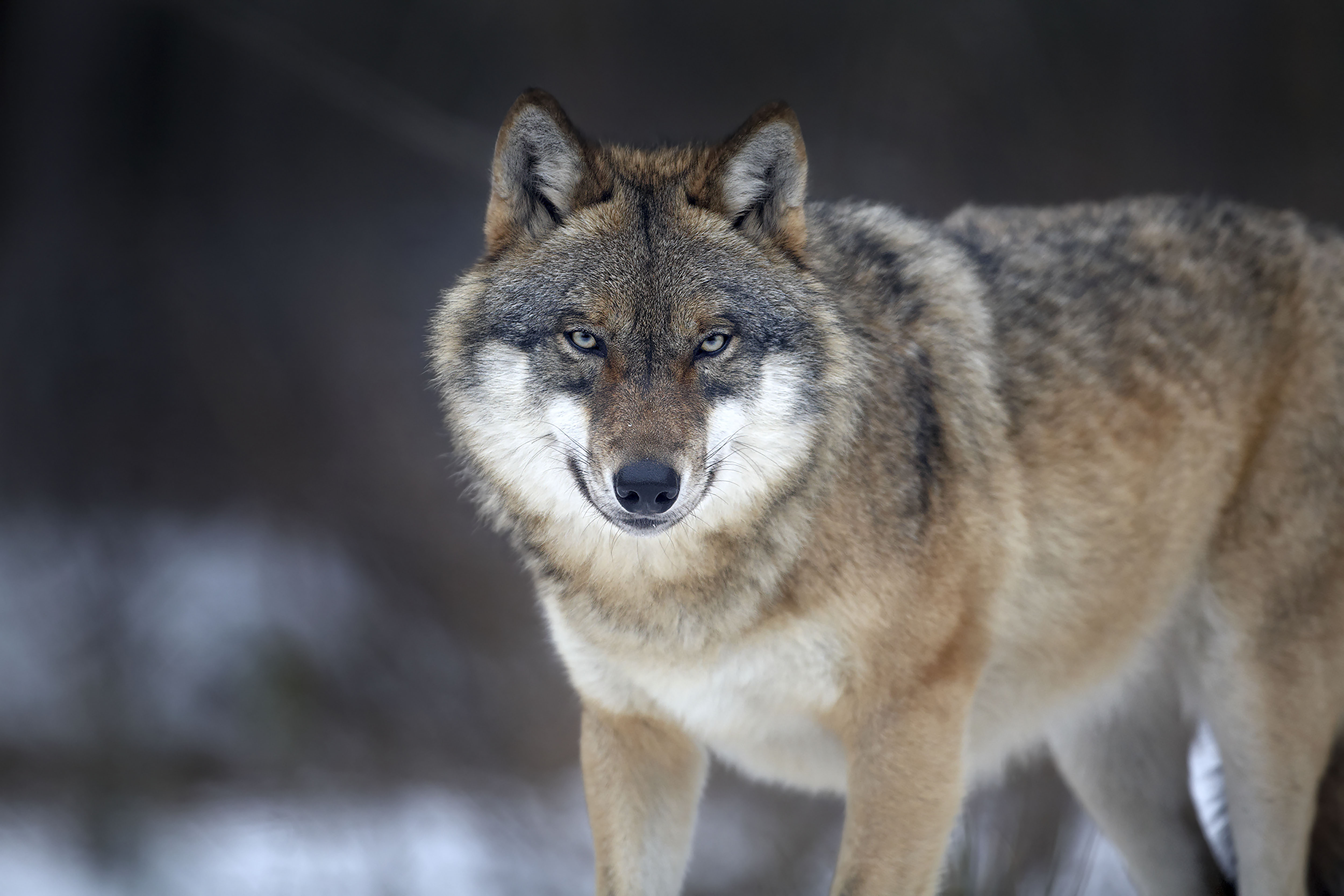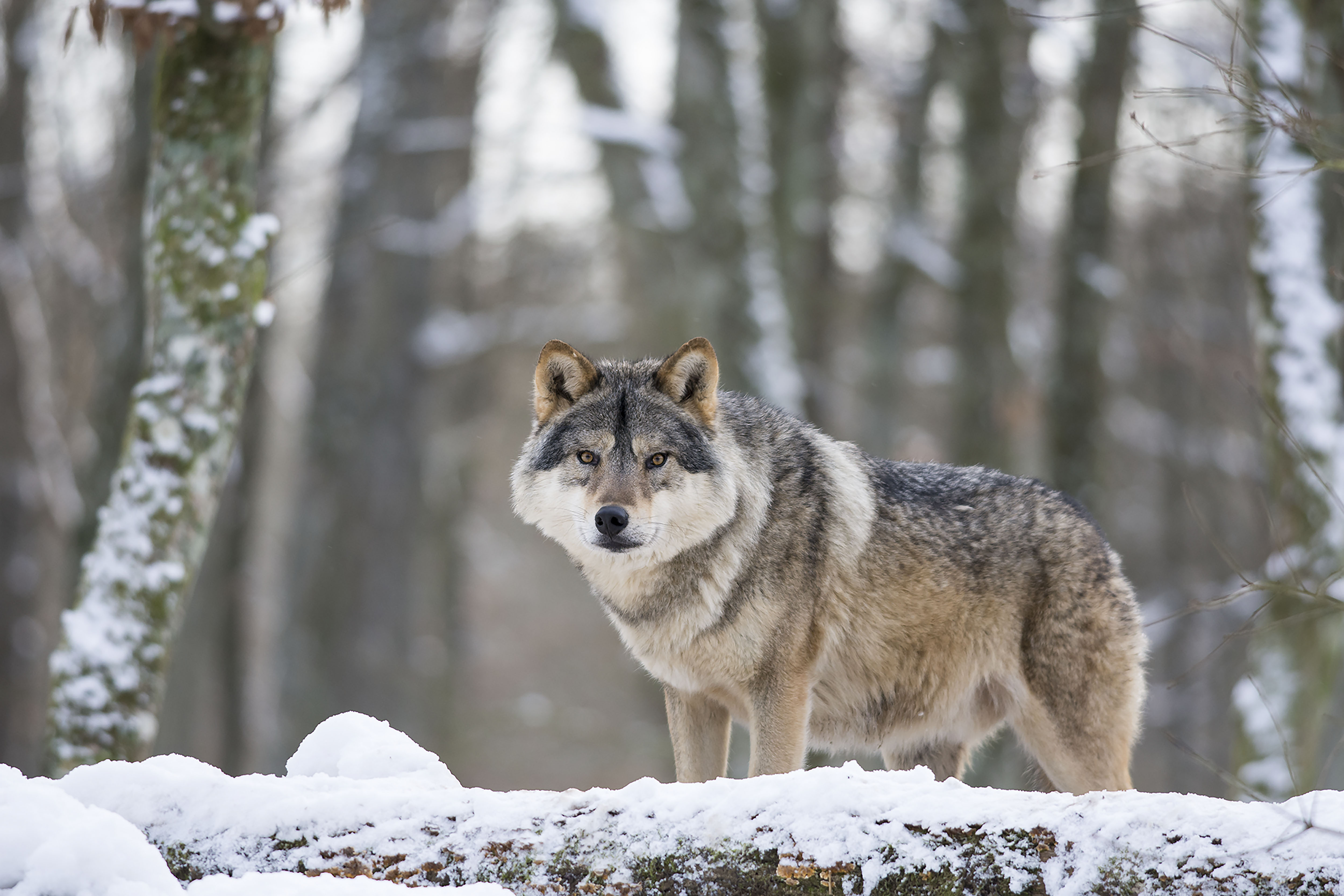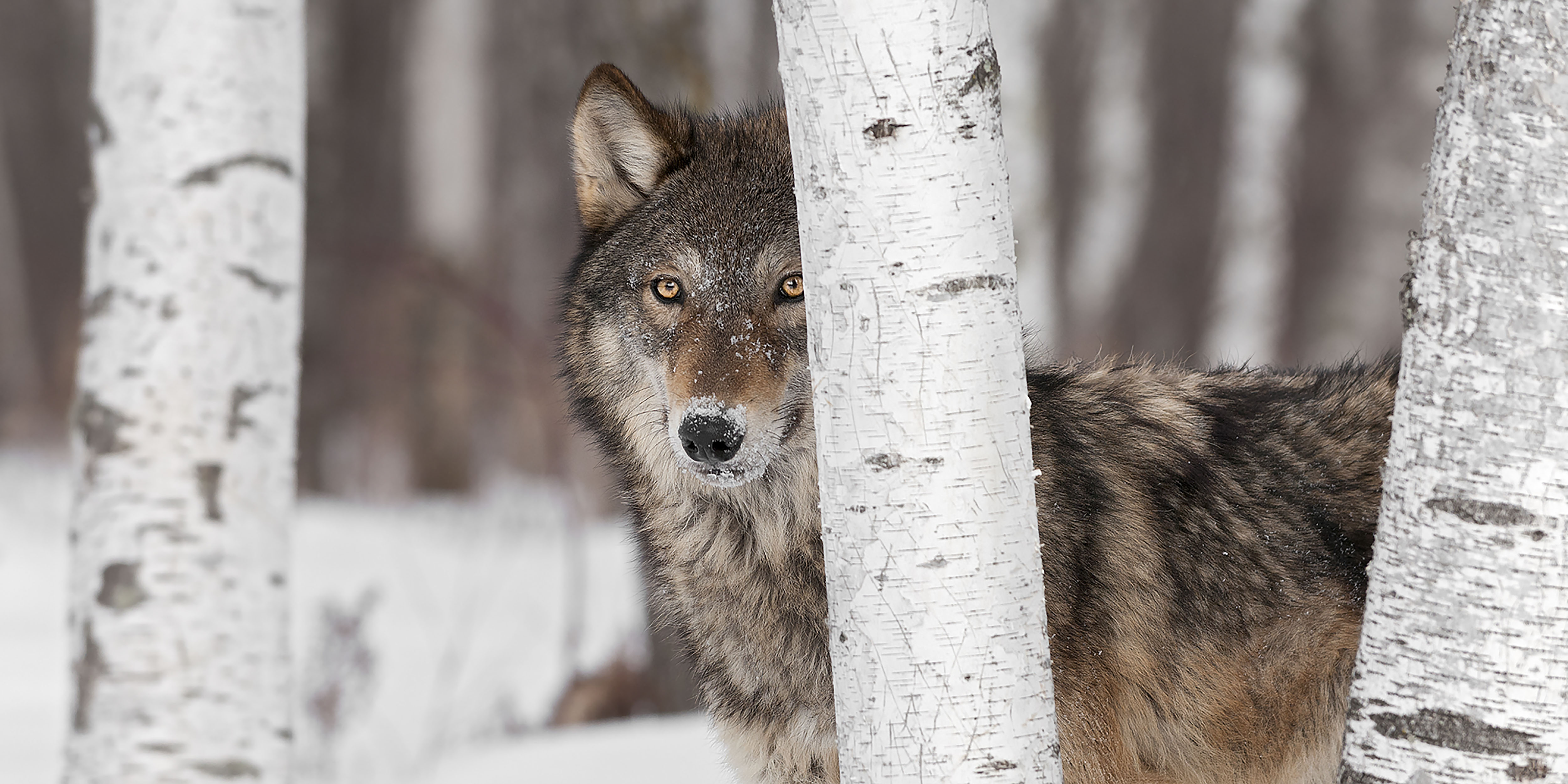Grey Wolf
(Canis lupus)
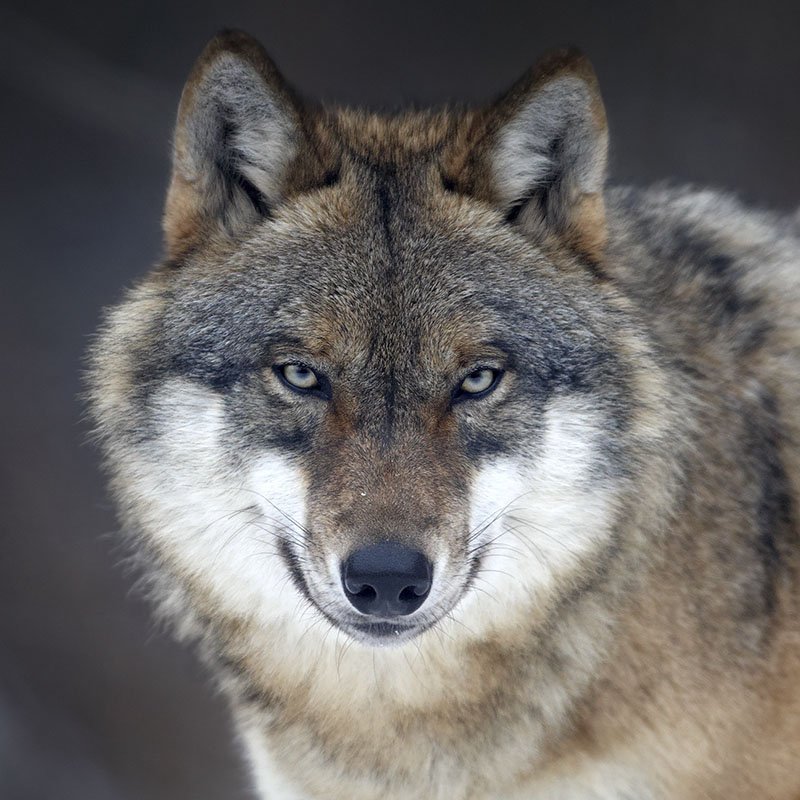
Pacific Temperate Rainforests
STATISTICS
Height up to
90 cm
Length up to
130 cm
Weight up to
80 kgs
Lifespan
13 years
Pack Animal - Highly Social - Partly Nomadic - Territorial
The Grey Wolf thrives in a variety of habitats from forests to tundras to prairies. It is the largest of all 41 species of canids, and its colours vary from white to grey, brown and even black. It has dense underfur providing good insulation from the cold. The dominant pair in a wolf pack are the only breeders, and the pair is monogamous. After mating, the female digs a den to give birth to her pups with gestation taking up to 63 days, and a litter being made up of up to 6 – 7 pups.
This species is highly social, living in a pack which is made up of between 2 – 30 animals, including the dominant pair and their offspring. The pack leader is the alpha male, followed by the alpha female. Rank in a pack determines who breeds and who eats first and is communicated through body language and facial features. Vocalizations such as howling allows pack members to communicate with one another.
The Grey Wolf is territorial, defending its home range from intruders. The species goes through both stationary and nomadic periods with the pack staying put during the breeding season and traveling long distances over winter (mostly at night). The Grey Wolf is a carnivore and hunts in packs, on their own or by scavenging. It primarily hunts in packs for large prey such as moose, bison, elk, and oxen while smaller mammals are usually hunted by lone wolves. This species controls prey populations by hunting the weak and old or young.
BIODIVERSITY BENEFIT
Population Control - Ecosystem Cleaning
THREATS
Persecution
Hunted and poisoned for preying on livestock.
Habitat Loss and Fragmentation
Due to human population explosion.
PROTECT THE WILDARK 100
